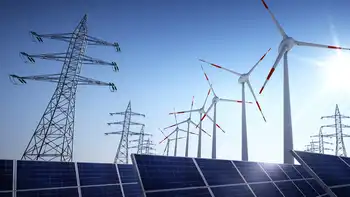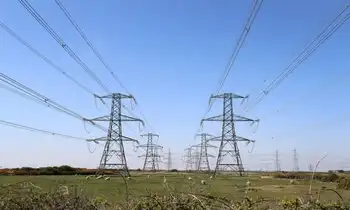Climate deal would reduce energy bills
In the absence of an agreement, the ratio of energy spending to Gross Domestic Product for the largest consumer countries would double by 2030, Fatih Birol, author of the International Energy Agency's World Energy Outlook (WEO) told Reuters in an interview.
"The world needs to go to the 450 part per million (ppm) target, not only because of climate change but because of growing problems within our energy system and its possible implications again on the economy," Birol said.
He was referring to a target to stabilize the concentration of the most dangerous greenhouse gas emissions in the atmosphere at 450 ppm of carbon dioxide equivalent.
Birol cited as an example the energy bill paid each year by the European Union which would more than double to $500 billion by 2030, up from $160 billion in the last 30 years, he said.
"We think this is very alarming. If you consider that in 2008 when we had the high prices, and I believe it was one of the reasons for the run-up to the financial crisis, the EU's oil and gas import bills to the GDP ratio was 2.3 percent," he said.
Oil prices soared to a record of nearly $150 a barrel in July last year. They then collapsed to less than $33 last December, but have since recovered to around $80.
The price collapse, combined with the credit crisis, choked off investment in new supplies and the Paris-based IEA has repeatedly warned the oil market could surge back, damaging still fragile economic growth.
Its previous WEOs on the long-term supply and demand picture have always stressed the need for investment in a wide range of energy supplies.
As the adviser to 28 industrialized nations, the IEA does not officially forecast prices, but makes assumptions as part of its analysis of future energy fundamentals.
Birol said the oil price was likely to reach $100 per barrel by 2015 and $190 by 2030.
"This means that if we don't do anything to our energy system, we will be in difficulty," he said.
For now the world's biggest energy spender is the United States. Demand there is still far ahead of any other consumer, but the gap is narrowing as Asian energy use is expected to grow strongly and the developed world to burn less fuel.
China, currently the second biggest energy user, would overtake the United States around 2025 as the world's top energy spender, while India would move into third place by around 2020, overtaking Japan.
In the immediate term, fossil fuel supplies are ample following the demand destruction triggered by last year's financial crisis.
In particular, there is a glut of natural gas. Gas prices in the United States are half the price of oil on an energy equivalent basis.
Birol said the IEA expected overcapacity of liquefied natural gas (LNG) terminals and gas pipelines to reach at least 250 billion cubic meters by 2015, more than three times the capacity in 2008.
This was mainly because of a boom in U.S. gas and LNG plants being built in the Middle East, he said.
Eventually, however, the surplus will be used up and to fend off a supply crunch by 2030, Birol predicted the world would need the equivalent of four more Russias. Russia sits on the world's biggest natural gas reserves.
This echoed comments by Birol in 2008 when the last WEO was published that the world needed four new Saudi Arabias by 2030 to compensate a fall in oil supplies by 2030.
Birol said the fall in gas demand had bottomed out and he expected consumption to begin rising at the end of this year or the beginning of 2010 as the economy rebounds.
At the same time, the IEA predicts gas output will halve to 1.5 trillion cubic meter (tcm) by 2030.
"In order to compensate the decline of 1.5 tcm and meeting the growth in demand, we need an additional capacity of 2.7 tcm, which is equivalent to four times current Russian capacity so this is a rather major find," he said.
The IEA revised the expected fall in investments, saying they would drop by 19.4 percent in 2009, compared with 2008, down 1.6 percentage points from the 21 percent fall quoted in a report presented to the G8 energy ministers in May.
"The decline... is still over $90 billion (instead of $100 billion), which is still very worrying for us," he said.
Related News

NT Power Penalized $75,000 for Delayed Disconnection Notices
NEWMARKET - The Ontario Energy Board recently ruled against Newmarket-Tay Power Distribution Ltd. (NT Power), fining them $75,000 for failing to issue timely disconnection notices to 870 customers between April and August 2022. These notices did not comply with the Ontario Energy Board's distribution system code, which mandates a minimum 14-day notice period before disconnection.
Out of the affected customers, ten had their electricity services disconnected, and six were additionally charged reconnection fees. However, NT Power has since reconnected all disconnected customers and refunded the reconnection fees, as confirmed by the Ontario Energy Board.
In response to these issues, NT Power has…





